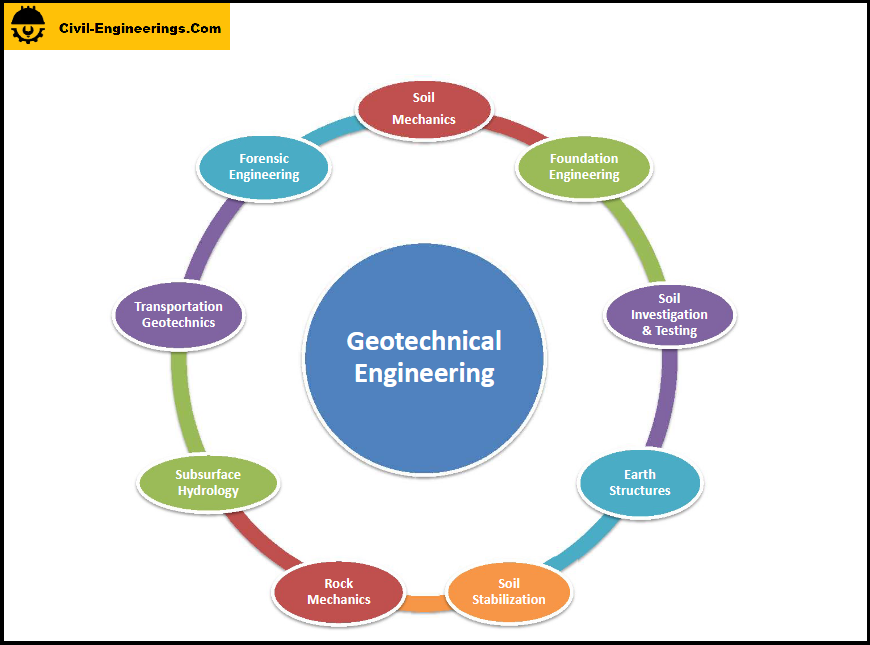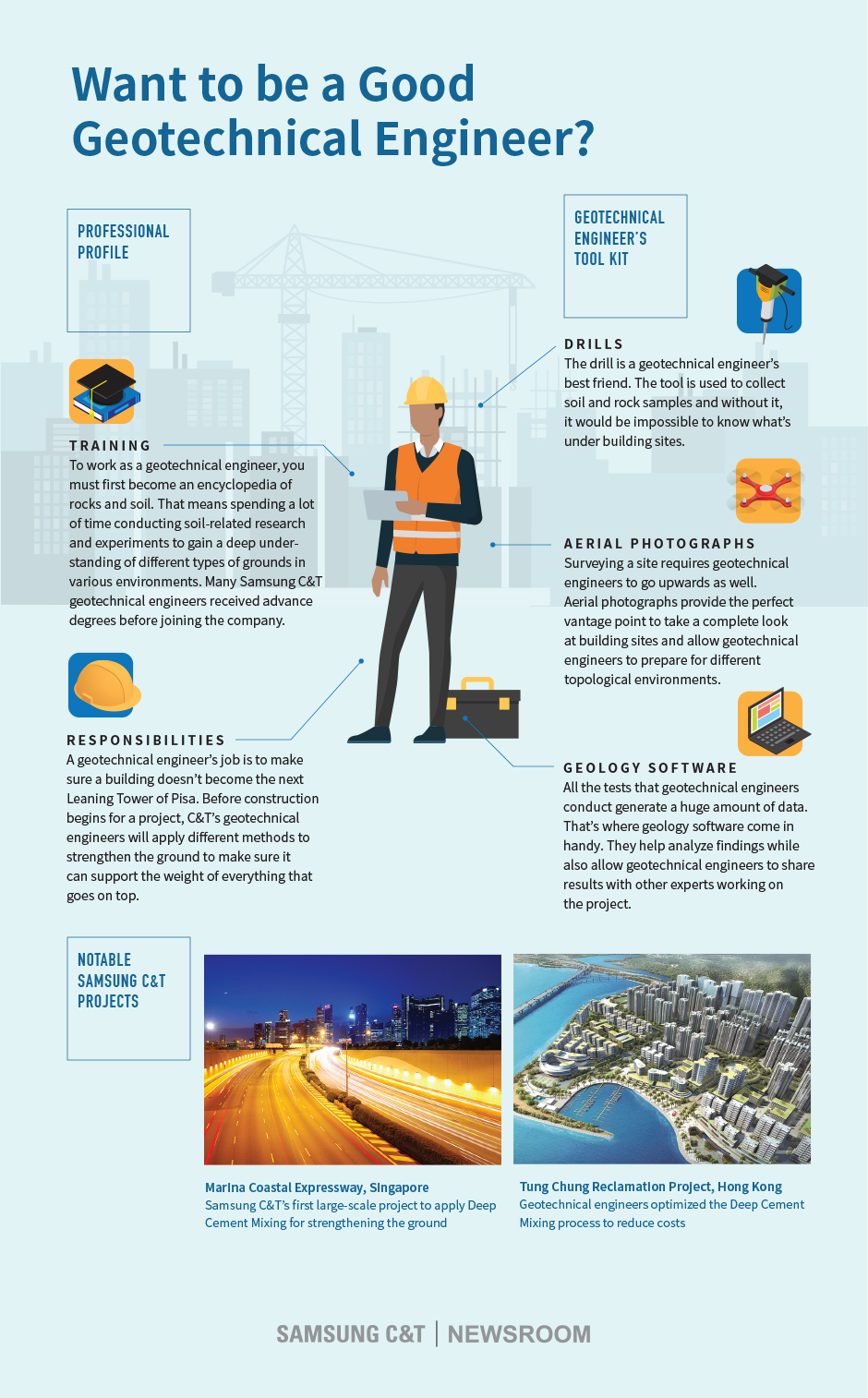The Facts About Geotechnical Engineering For Construction Projects Revealed
The Facts About Geotechnical Engineering For Construction Projects Revealed
Blog Article
The Best Guide To Geotechnical Engineering For Construction Projects
Table of ContentsGetting My Geotechnical Engineering For Construction Projects To WorkLittle Known Facts About Geotechnical Engineering For Construction Projects.The Definitive Guide for Geotechnical Engineering For Construction ProjectsThings about Geotechnical Engineering For Construction ProjectsNot known Details About Geotechnical Engineering For Construction Projects
Therefore, throughout the examination, it is very important to drill at the needed depth and the required number of openings based on the recommendation of the Canadian Structure Design criterion. Sometimes, the owner could save some Geotechnical Investigation cost but wind up investing greater than the anticipated during the building expense.The duties of the geotechnical expert entail offering material screening for construction assistance. Geotechnical Engineering for Construction Projects. Geotechnical designers evaluate all the field examination records to make certain that building is going on according to the job requirements. During building, a confirmatory examination for soil compaction is done on-site to make sure that no future settlement occurs
After the concrete is put -7 days and 28 days- tests are carried out on concrete examples collected from the website to make certain that the concrete put fulfills the design criterion. Asphalt core is taken after the Asphalt is laid and compacted to confirm that it meets the layout standard. All research laboratory examination reports are evaluated by the Geotechnical Designer to make certain that it satisfies the job spec.
The Only Guide to Geotechnical Engineering For Construction Projects

Geotechnical engineering plays an important role in ensuring the security of construction projects. Geotechnical engineering is an important branch of civil design that concentrates on recognizing the behavior of planet products, such as soil and rock.

For a reliable structure and a smooth building and construction procedure, trust to offer the proficiency you require. Contact to get specialist guidance and geotechnical services customized to your next task.
Some Ideas on Geotechnical Engineering For Construction Projects You Need To Know
When starting a land growth task, recognizing the ground beneath your feet is as important as the frameworks you plan to develop above it. Our Geotechnical Design group analyse the ground, ensuring it is appropriate for the proposed advancement while supplying you with the information required to fulfill your task goals.
Geotechnical Engineering looks at the development of the ground, as it is the building blocks for all tasks. Where frameworks require to be designed with regard to the ground problems; ground conditions (e.g., soft ground) might call for strengthening relying on the dimension of the desired structure. Before structure, you require to find out about the groundwater, soil framework, and liquefaction possibility of your land.
For sites that are not attached on the regional authority framework extra website examinations would certainly be needed to offer technological inputs for on-site stormwater and wastewater. We have experienced Geotechnical Designers based in each office, sustaining your geotechnical needs across the country. Reach out to us to talk about how we can sustain your following project.
These records are tailored to meet the particular demands of a project and consist of layout parameters and advice for the building of a variety of man-made structures. Along with supplying working as a consultant services covering areas such as incline security and load-bearing abilities for different products, these engineers carry out research and growth tasks to boost methodologies, equipment, materials expertise and analysis covering whole lifecycles.
3 Easy Facts About Geotechnical Engineering For Construction Projects Explained

Prices of pay generally boost as your knowledge and skills grow, with standards directing to a graduate starting wage of in between 18,000 and 28,000 per year in the UK. This rises to 26,000 to 36,000 read here with a few years of experience and after that getting to 40,000 to 60,000+ for elderly, legal or master designers.
With the ideal application it go to my blog is possible to understand the profession and gain access to a tough yet satisfying and vital career. A geologist would certainly need to retrain to become a geotechnical engineer, although there is lots of cross-over between the 2 professions, which could make this less complicated - Geotechnical Engineering for Construction Projects. Rock hounds need to have an understanding of soils, rocks and other products from a clinical point of view, while geotechnical designers story their knowledge of issues such as soil and rock auto mechanic, geophysics and hydrology and apply them to design and environmental tasks
When beginning, these engineers will certainly have a tendency to work on much less complex jobs, developing understanding and experience all set for more difficult work later. Geotechnical engineers tend to be experts in particular areas as they expand in experience, focusing on certain frameworks such as trains, roads or water. These designers likewise deal with renewable energy, offshore and onshore oil and gas, nuclear power, and extra.
The Ultimate Guide To Geotechnical Engineering For Construction Projects
The time taken to end up being a geotechnical designer depends on where you are based, where you study and what degree of education and learning you want to acquire before going into the workplace. Generally-speaking it takes 3-4 years to reach the standard needs to start a career as a geotechnical engineer.
These operations allow experts to examine a host of soil technicians including weight, porosity, void-to-solid bit proportion, permeability, compressibility, maximum shear toughness, bearing ability and contortions. If the structure requires a deep structure, designers will use a cone infiltration examination to approximate the quantity of skin and end bearing resistance in the subsurface.
When examining an incline's equilibrium of shear anxiety and shear toughness, or its ability to hold up against and undertake activity, rotational slides and translational slides are typically thought about. Rotational slides fall short along a rounded surface area, with translational slides taking place on a planar surface. An expert's objective is helpful site to identify the conditions at which a slope failing might happen.
Usually, findings recommend that a site's soil need to be dealt with to boost its shear toughness, stiffness and permeability prior to style and building. When it comes time to lay out structure strategies, professionals are significantly concentrated on sustainability, more especially how to lower a structure's carbon impact. One method has actually been to change 20 percent of a foundation's cement with fly ash, a waste item from coal fire nuclear power plant.
Report this page